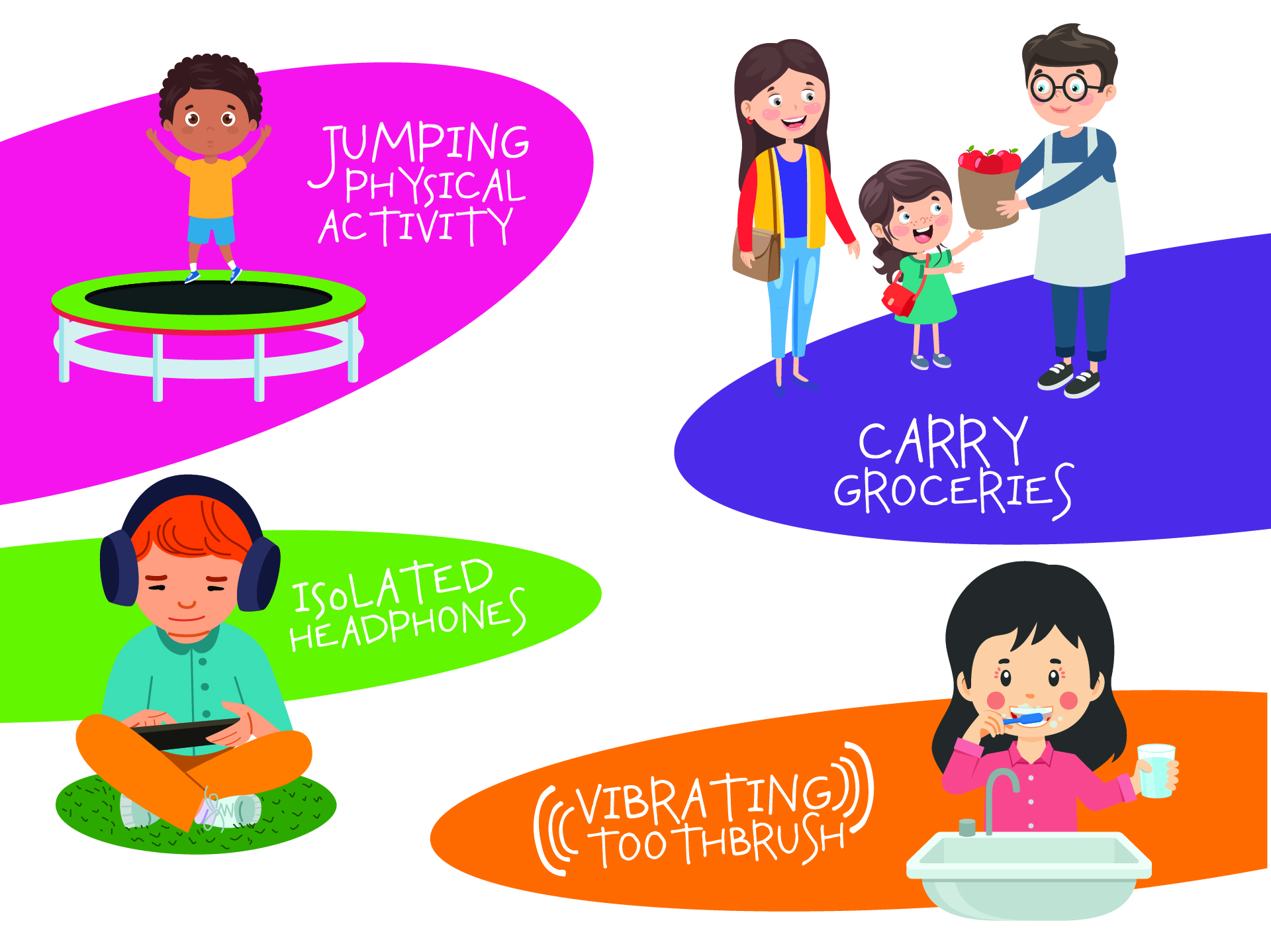Does your child having a difficult time focusing? Are they always on the go? Climbing furniture, seeking touch, crashing into objects, placing inedible items in their mouth? Maybe they are a picky eater, or they do not like getting their hands messy. Are they excessively bothered by certain textures and do not like wearing socks? Perhaps they are overly sensitive to loud noise?
All of these are related to sensory processing difficulties and a sensory need is not being met.
You may not necessarily be aware, but you have certain activities you engage in throughout the day that help you to regulate your body. You may have a cup of coffee in the morning to increase your arousal levels. You might scribble and doodle while on the phone during an important conversation. You may workout, go on a run, or do yoga in order to help you sleep and reduce stress. All of these activities change your level of arousal and help with your occupational performance.
Some children have more trouble than others adjusting to everyday stimuli especially those with sensory processing disorder. If a child cannot adjust or modulate their behaviors, then their participation in everyday occupations will be negatively impacted. Occupations for children mainly consist of play, school, and self-care.
Modern lifestyle trends have decreased the amount of sensory input we receive. We used to have more opportunities for sensory experiences such as walking to school, playing outside, or riding a bike. Nowadays kids have less opportunities for movement. Schools require them to sit for long periods of time while not providing enough physical activities throughout the day. Modern lifestyles can also overwhelm an individual. Imagine going to the grocery store on a warm day when it is crowded. There is a lot of sensory input a child will be receiving (the noise may be too loud, the lights too bright, temperature too warm, too many people bumping into you) which can lead to a meltdown.
If your child is struggling with sensory processing difficulties, then the occupational therapist will likely recommend treatment with a “sensory diet”.
What is a sensory diet?
It might be the first time you’re hearing about a sensory diet, or maybe you’ve heard of the term but do not know exactly what it means. We usually associate the word diet with eating, but not in this case. To put it as simply as possible, a sensory diet is a personalized plan to meet individual sensory needs. Think of it as “nutrition” for the central nervous system. A list of activities that will lead to a routine with effective sensory strategies.
What is the purpose of a sensory diet?
- Regulate emotions and help adjust to different levels of arousal
- Aid in tolerance of stressful situations
- Increase behavioral organization and reduce unwanted behaviors (sensory seeking or avoiding)
- Improve attention span/focus
- Reduce stress with transitions
- Improve overall self-confidence
- Lead to improved social participation
- Increase in occupational participation
A sensory diet will include suggestions and activities for the 8 sensory systems:
- Tactile: touch
- Auditory: sound
- Visual: sight
- Olfactory: smell
- Gustatory: taste
- Vestibular system: movement
- Proprioceptive system: position of body in space
- Interoceptive system: inner body
A child may be overresponsive or under responsive to any of these senses, and the sensory diet will address their specific need.
Examples of sensory diet activities:
- Using noise cancelling headphones in a loud environment
- Providing a child with a 15-minute jumping break on a trampoline
- Doing yoga poses/animal yoga
- Carrying groceries
- Brushing teeth with a vibrating toothbrush
- Tying a TheraBand to a student’s chair to be used as a foot fidget
- Throwing beanbags at a target
One of these strategies could work for a child, while another child might require more sensory input. In addition, what works for a child one day may not work another day as that child may present differently due a change in the environment, or their emotions.
This is why observation and data are so important in the creation of a sensory diet. The therapist will take a look at the child’s sensory profile, their sensory needs/preferences, and their behavioral response to an activity in order to create an effective diet. Since behavior is a form of communication, the therapist will then use a child’s behavioral response as a way to observe how the child is responding to the sensory input.
Takeaway
Everyone’s sensory system is unique, and each individual has different needs. Some individuals will require more strategies and assistance throughout the day in order to engage in everyday occupations, while others may not. A sensory diet will provide a unique list of activities that a child can perform throughout the day in order to receive input that will help them regulate and participate in everyday activities at an optimal level.




